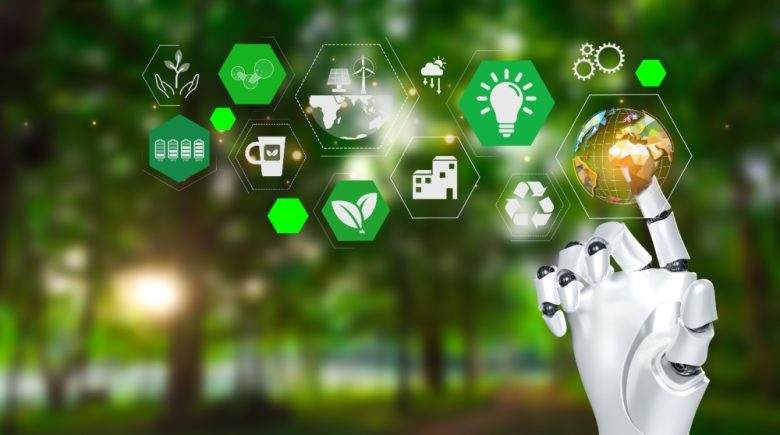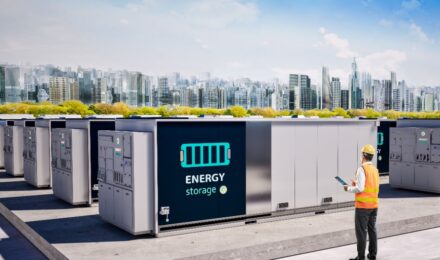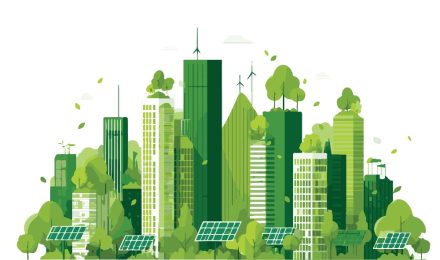In today’s world, Artificial Intelligence (AI) and renewable energy management are revolutionizing how we live and work. Each is a transformative field on its own, but when combined, their impact becomes even more profound.
Renewable energy is far from a modern invention. For centuries, humans have harnessed solar energy in different forms and used wind power for tasks like milling grain—all to take advantage of free, renewable resources. However, it wasn’t until the 20th century that the movement to adopt renewables as mainstream energy sources gained significant momentum, giving rise to widespread adoption of solar panels, wind turbines, and hydroelectric power.
With the rapid advancement of Artificial Intelligence, new methods for optimizing renewable energy systems have emerged. AI-powered tools such as machine learning and predictive analytics are now driving improvements in efficiency, lowering operational costs, and reducing environmental impact.
Let’s explore how AI is transforming renewable energy management:
Predicting Consumption Trends
AI enables accurate predictions of future energy consumption by analyzing historical usage patterns and modeling future scenarios. For instance, in a geothermal power plant, AI tools can forecast power output based on underground heat conditions and anticipated demand. In the case of solar energy, although output depends on sunlight intensity, weather variability makes prediction challenging. Here, AI models analyze vast datasets to provide forecasts that are far more precise than simple meteorological estimates.
Predictive Equipment Maintenance
AI can foresee equipment failures before they occur, preventing downtime and avoiding unnecessary repair costs. For example, AI can identify the most promising geothermal sites by analyzing geological and seismic data. Once a site is operational, AI can optimize drilling operations and monitor equipment health in real time, using historical breakdown data to anticipate and prevent malfunctions—saving both time and money.
Optimizing Renewable Energy Production
Advanced algorithms process large datasets to determine the most efficient strategies for maximizing energy output. These insights guide energy managers in configuring renewable energy systems for optimal performance, whether that means adjusting turbine angles or refining solar panel placements to capture the most sunlight.
Optimizing Renewable Energy Storage
AI’s ability to track and predict fluctuations in energy supply and demand ensures energy is generated, stored, and used efficiently. For instance, during periods of surplus solar or wind energy, AI systems can direct excess power into storage, making it available when renewable generation drops. Furthermore, AI optimizes battery charge and discharge cycles by forecasting usage patterns, leading to greater energy savings and improved sustainability.
Enhancing Grid Stability and Management
One of the key challenges of renewable energy is its intermittency—the fact that production depends on variable environmental conditions. AI addresses this by continuously monitoring energy grids, detecting voltage fluctuations, and anticipating transmission issues. This allows grid operators to respond proactively, reducing the risk of outages and maintaining a stable, reliable energy supply, even with unpredictable weather.
Autonomous Energy Trading
AI also plays a role in the market, enabling algorithmic energy trading. By analyzing market trends and price fluctuations, AI can help renewable energy producers sell excess power at optimal prices. These automated systems act swiftly and efficiently, maximizing profits and passing on savings to consumers, who benefit from more competitive energy rates.
Maximizing Energy Efficiency
AI tools not only boost energy production but also improve overall energy efficiency. By analyzing usage patterns, AI can identify inefficiencies that might otherwise go unnoticed and suggest adjustments to reduce waste. Additionally, with predictive maintenance ensuring equipment runs at peak performance, operational costs are lowered, and energy output is optimized.
Challenges and Considerations
Despite these advantages, integrating AI into renewable energy systems comes with its own challenges. Key concerns include:
- Data security risks, such as cyberattacks targeting AI-driven systems.
- High upfront costs associated with implementing AI technologies.
- The need for ongoing model training and updates to keep predictions accurate.
- The requirement for specialized expertise, which can be costly and scarce.
Conclusion: A Green Future Ahead
AI is transforming renewable energy management through its advanced predictive capabilities and optimization tools. By enhancing efficiency, reducing waste, and supporting grid stability, AI helps make renewable energy more reliable, cost-effective, and sustainable.
As climate change discussions, governance, and policies continue to evolve, it’s clear that AI will play an essential role in shaping the future of clean energy. The synergy between AI and renewable energy not only promises operational improvements but also advances global sustainability goals. The future of renewable energy is indeed green—and AI is helping lead the way.
In today’s world, Artificial Intelligence (AI) and renewable energy management are revolutionizing how we live and work. Each is a transformative field on its own, but when combined, their impact becomes even more profound.
Renewable energy is far from a modern invention. For centuries, humans have harnessed solar energy in different forms and used wind power for tasks like milling grain—all to take advantage of free, renewable resources. However, it wasn’t until the 20th century that the movement to adopt renewables as mainstream energy sources gained significant momentum, giving rise to widespread adoption of solar panels, wind turbines, and hydroelectric power.
With the rapid advancement of Artificial Intelligence, new methods for optimizing renewable energy systems have emerged. AI-powered tools such as machine learning and predictive analytics are now driving improvements in efficiency, lowering operational costs, and reducing environmental impact.
Let’s explore how AI is transforming renewable energy management:
Predicting Consumption Trends
AI enables accurate predictions of future energy consumption by analyzing historical usage patterns and modeling future scenarios. For instance, in a geothermal power plant, AI tools can forecast power output based on underground heat conditions and anticipated demand. In the case of solar energy, although output depends on sunlight intensity, weather variability makes prediction challenging. Here, AI models analyze vast datasets to provide forecasts that are far more precise than simple meteorological estimates.
Predictive Equipment Maintenance
AI can foresee equipment failures before they occur, preventing downtime and avoiding unnecessary repair costs. For example, AI can identify the most promising geothermal sites by analyzing geological and seismic data. Once a site is operational, AI can optimize drilling operations and monitor equipment health in real time, using historical breakdown data to anticipate and prevent malfunctions—saving both time and money.
Optimizing Renewable Energy Production
Advanced algorithms process large datasets to determine the most efficient strategies for maximizing energy output. These insights guide energy managers in configuring renewable energy systems for optimal performance, whether that means adjusting turbine angles or refining solar panel placements to capture the most sunlight.
Optimizing Renewable Energy Storage
AI’s ability to track and predict fluctuations in energy supply and demand ensures energy is generated, stored, and used efficiently. For instance, during periods of surplus solar or wind energy, AI systems can direct excess power into storage, making it available when renewable generation drops. Furthermore, AI optimizes battery charge and discharge cycles by forecasting usage patterns, leading to greater energy savings and improved sustainability.
Enhancing Grid Stability and Management
One of the key challenges of renewable energy is its intermittency—the fact that production depends on variable environmental conditions. AI addresses this by continuously monitoring energy grids, detecting voltage fluctuations, and anticipating transmission issues. This allows grid operators to respond proactively, reducing the risk of outages and maintaining a stable, reliable energy supply, even with unpredictable weather.
Autonomous Energy Trading
AI also plays a role in the market, enabling algorithmic energy trading. By analyzing market trends and price fluctuations, AI can help renewable energy producers sell excess power at optimal prices. These automated systems act swiftly and efficiently, maximizing profits and passing on savings to consumers, who benefit from more competitive energy rates.
Maximizing Energy Efficiency
AI tools not only boost energy production but also improve overall energy efficiency. By analyzing usage patterns, AI can identify inefficiencies that might otherwise go unnoticed and suggest adjustments to reduce waste. Additionally, with predictive maintenance ensuring equipment runs at peak performance, operational costs are lowered, and energy output is optimized.
Challenges and Considerations
Despite these advantages, integrating AI into renewable energy systems comes with its own challenges. Key concerns include:
- Data security risks, such as cyberattacks targeting AI-driven systems.
- High upfront costs associated with implementing AI technologies.
- The need for ongoing model training and updates to keep predictions accurate.
- The requirement for specialized expertise, which can be costly and scarce.
Conclusion: A Green Future Ahead
AI is transforming renewable energy management through its advanced predictive capabilities and optimization tools. By enhancing efficiency, reducing waste, and supporting grid stability, AI helps make renewable energy more reliable, cost-effective, and sustainable.
As climate change discussions, governance, and policies continue to evolve, it’s clear that AI will play an essential role in shaping the future of clean energy. The synergy between AI and renewable energy not only promises operational improvements but also advances global sustainability goals. The future of renewable energy is indeed green—and AI is helping lead the way.



